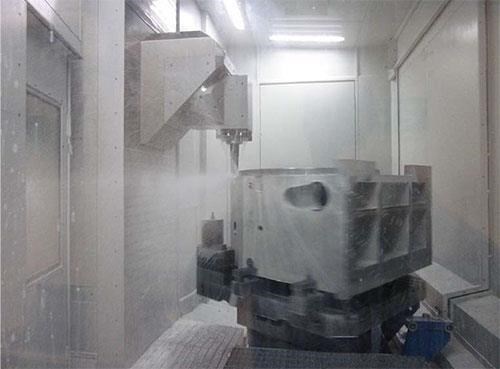3 Design Elements for Effective Turning on a 5 Axis Machine
Here are three design elements that enable this five-axis machine to effectively turn workpieces, even if they aren’t symmetric.
Share






The rotary table balance control system on this five-axis machine enables 600-rpm turning of non-symmetric parts weighing as much as 8,818 pounds.
I like to use numbered or bullet lists in my articles. These visual tools make it easier for readers to quickly scan an article for relevant information. It also makes the article shorter and easier to digest, in part because there’s no need to include transition sentences taking the reader from one paragraph to the next. Instead, key points are provided in meaningful little portions.
In a recent print article, I wrote about three design elements said to enable the MCT five-axis machine platform from Burkhardt + Weber, part of Industrias Romi SA, to be effective at turning operations. These include:
- Turning tool adapter (Because turning with a tool in the main spindle limits production and damages bearings.)
- Table balance control (Because parts to be turned on a five-axis machine often aren’t symmetric.)
- Thermal isolation system (Because introducing heat isn’t helpful here.)
Related Content
-
5 Tips for Running a Profitable Aerospace Shop
Aerospace machining is a demanding and competitive sector of manufacturing, but this shop demonstrates five ways to find aerospace success.
-
Controlling Extreme Cutting Conditions in Large-Part Machining
Newly patented technologies for controlling chatter and vibration during milling, turning and boring operations promise to drastically reduce production time and increase machining performance.
-
Machine Tool Drawbar Made With Additive Manufacturing Saves DMG MORI 90% Lead Time and 67% CO2 Emission
A new production process for the multimetal drawbar replaces an outsourced plating step with directed energy deposition, performing this DED along with roughing, finishing and grinding on a single machine.





















